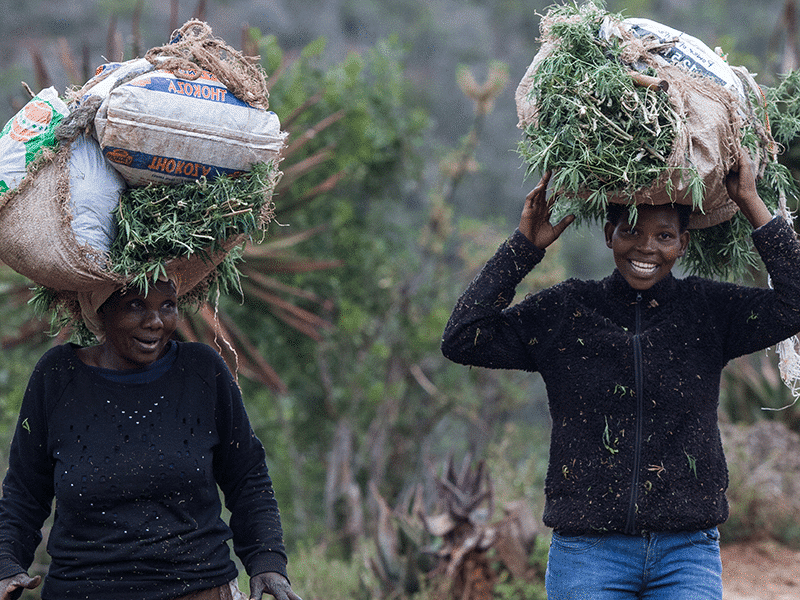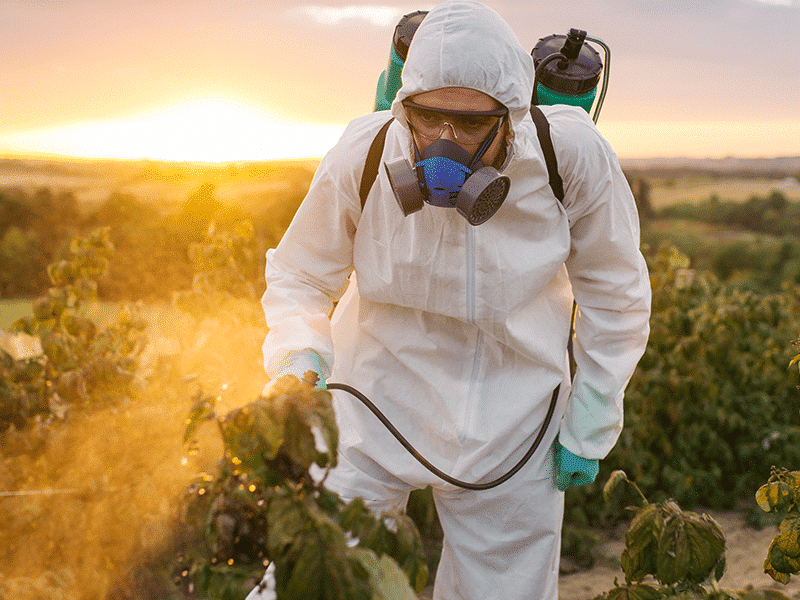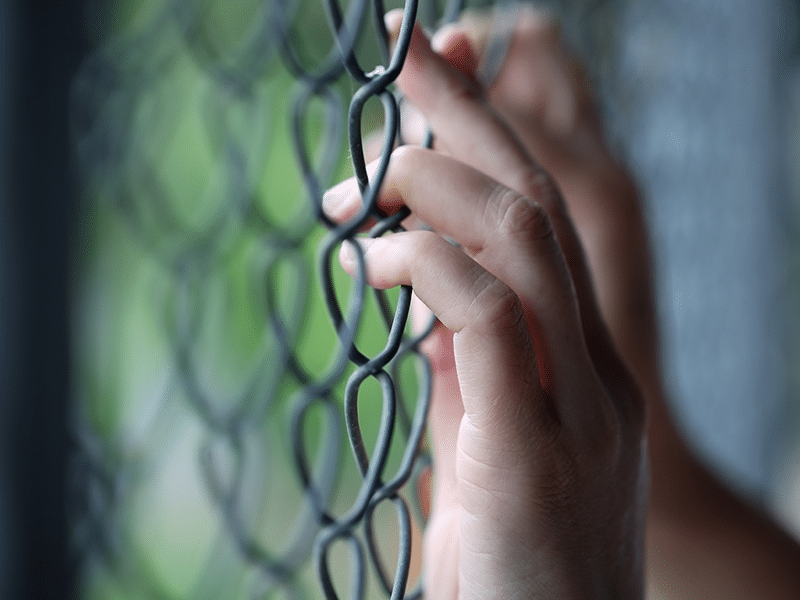The global cannabis economy is now reaching Oceania, with commercial cultivation underway in Australia, a legalization referendum coming up in New Zealand, and legal barriers starting to come down in the Pacific Islands.
The industry will face special challenges in this vast and sprawling region. Where the impacts of global climate change are concerned, Oceania is on the frontlines — as evidenced by the wildfires that caused unprecedented devastation across Australia last year, and fears that island nations could disappear beneath rising seas in the years to come.
Many of the Pacific Islands are also facing dilemmas of sovereignty. Some of these island nations remain colonial holdings — in name, practice, or both — and some now see active struggles for full self-determination. These complexities could mean both opportunities and obstacles for a cannabis economy.
A survey of industry prospects is provided in second edition of The Oceania Cannabis Report, the recently released white paper from Prohibition Partners — a somewhat ironically named UK-based consultancy, actually dedicated to monitoring and encouraging the growth of the cannabis sector in the emerging post-prohibition world.
Stephen Murphy, Prohibition Partners’ managing director, writes in his introduction: “Blessed with regions of sub-tropical climate and an expanse of agricultural space, Oceania is fast emerging as a global contender in both the medical cannabis and adult-use space thanks to increasingly liberal attitudes in the region.”
Murphy writes, in guardedly optimistic tones, that “the industry must be mindful of its impact on climate change and the implications of this for natural disasters such as the fires that besieged Australia in the latter part of 2019 and the first weeks of 2020. As the cannabis industry is in its relative infancy, there is a very real opportunity for businesses to set the foundations for a flourishing, considerate, eco-conscious and socially intelligent industry.”
The report begins by examining the two Anglophone giants of the region: “With an abundance of agricultural land and unique growing conditions, Australia and New Zealand are fully aware of the significant cultivation potential that they hold and the subsequent financial benefits that this could deliver to their respective economies — not only in establishing an autonomous domestic supply but in supplying the rest of the world’s needs.”
Australia Follows Federal Model
Last year’s wildfires devoured more than 11 million hectares of land across all of Australia’s states and territories. But Murphy writes: “Australia holds ambitions to become a major player in the global cannabis industry and the success of this industry in the country could help to counteract the cost to the economy of the fires.” These loses were put at more than US$2.9 billion.
He adds that cannabis companies operating in Australia are “duty-bound to perform good corporate citizenship by engaging positively with affected communities during this disaster, moderating their water consumption and helping communities to rebuild through employment opportunities or provision of infrastructure …”
Medicinal cannabis use has been legal at the federal level in Australia since February 2016. Media coverage of Dan Haslam, a young cancer patient in New South Wales who suffered from chemotherapy-induced nausea and vomiting (CINV), was instrumental in swaying public opinion in favor of the reform. A BBC profile notes the irony that Haslam’s father was a police officer who, by his own admission, had arrested a “tonnage” of people for cannabis-related crimes.
Participation in the medical marijuana program was initially bottlenecked by the rigorous conditions imposed by the federal body overseeing it, the Therapeutic Goods Administration (TGA). This meant that until recently medical users were often forced into the illicit market. But these strictures have been gradually lifted, and now some 34,500 patients are approved with a physician’s prescription under the TGA’s Special Access Scheme
In early 2019, Australia’s parliament lifted the stricture on export of medicinal cannabis products, opening the way to a commercial industry and foreign investment. Since then, six large-scale cultivation facilities have received “major project status” from the Australian government.
The Cannabis Bowl Down Under
In Victoria, the state government has embraced ambitious plans to become the “cannabis bowl” of Australia. Local company Cannatrek last year announced a multi-million dollar partnership with Ontario-based CannTrust to cultivate in Shepparton, Victoria. Cronos Australia has also announced plans for a major “research & development” facility in the state.
In Queensland, Asterion Cannabis has announced a major cultivation facility for the town of Toowoomba. And in New South Wales, the government has announced a multimillion dollar study of the potential for a cannabis industry in the state.
But where outright adult-use legalization is concerned, Australia seems set to follow a federal model somewhat mirroring that in the United States. The first of the country’s jurisdictions to legalize, the Australian Capital Territory (ACT) — Down Under’s equivalent of the District of Columbia — includes the city of Canberra. The ACT’s Legislative Assembly passed the measure in September 2019, and it took effect in January. It allows adults to possess up to 50 grams and grow two plants. The ACT, which decriminalized cannabis in 1992, has been a pacesetter for cultural freedom for Australia. In 2013, the ACT legalized same-sex marriage, although the federal government was able to overturn the law by taking it to the High Court of Australia.
The federal government is now led by Prime Minister Scott Morrison of the misleadingly named Liberal Party (which is actually the more conservative of Australia’s two major parties). Morrison’s government has not challenged the ACT’s cannabis legalization measure in the courts. But Attorney General Christian Porter has made clear that it has no impact on “Commonwealth offences” — as federal crimes are called in Australia. The Australian Federal Police have the power to enforce Commonwealth laws within the ACT, which could mean that cannabis users will remain at risk.
Socially progressive Victoria is currently undertaking a review its drug policies and may be next to embrace legal adult-market cannabis. Pressure is also mounting for legalization in Tasmania, where the issue has been taken up the Australian Green party. The Australian Greens, who hold several seats in parliament, came out for legalization in 2018.
Aotearoa: Countdown to Legalization
Across the Tasman Sea from Australia, Oceania’s second most populous Anglophone country, New Zealand — increasingly known by its indigenous name, Aotearoa — legalized medical marijuana in December 2018 with passage of the Misuse of Drugs (Medicinal Cannabis) Amendment Act. Under New Zealand’s Medical Cannabis Scheme, general practitioners are empowered to prescribe cannabis without recommendation or oversight from a specialist. Administered by the Medical Cannabis Agency, the program also allows terminally ill patients to use cannabis without fear of prosecution, according to new regulations that took effect in April 2020. As in the Australian program, CBD and THC are treated basically the same — legally available only to those officially enrolled in the program.
Prohibition Partners writes that “all eyes” in the global industry are on New Zealand, where a legalization measure will be on the 2020 ballot in September. The adult use referendum was pledged by the ruling center-left Labour Party in 2017, following much activist pressure, including from the Green Party of Aotearoa New Zealand, which has its own parliamentary bloc.
The law would allow those over the age 20 to purchase up to 14 grams of cannabis per day, which may be consumed only in private residences or licensed facilities. The measure would mandate investments in public health education campaigns and impose restrictions on advertising. It would also allow adults to cultivate two plants for personal use. A “Cannabis Regulatory Authority” would be created to oversee the industry, approve licenses for cannabis businesses, and promote responsible use.
Passage of the referendum is not a given. Prohibition Partners warns that “information campaigns by conservative lobby groups are having a detrimental impact on the public’s ability to access unbiased information.” Perhaps “disinformation campaigns” would be the better phrase. News accounts in New Zealand indicate that the group Family First has been hawking highly dubious claims linking cannabis to psychosis.
The Helen Clark Foundation, a progressive think-tank linked to the Auckland University of Technology, is advocating in favor of the referendum. And it’s calling for a legalization model that goes further, including expungement of prior minor cannabis offenses. It is also calling for a legal market structure designed to prevent or discourage the emergence of large commercial cannabis producers and retailers.
Patchwork in Pacific Islands
Beyond the two regional Anglophone giants, Oceania consists of the nations and territories of the Pacific Islands. Many of these remain almost unknown to North Americans, despite the fact that they are spread out across a substantial portion of the planet’s surface. The Prohibition Partners report classifies these islands according to the three major regional groupings of the Austronesian language family —Melanesia, Micronesia and Polynesia.
Melanesia, to the north of Australia and New Zealand, includes Papua New Guinea, the Solomon Islands, New Caledonia, Vanuatu, and Fiji. Micronesia, the next sub-region to the north, includes Guam, Palau, the Mariana Islands, the Marshall Islands, and the Federated States of Micronesia. Prohibition Partners places Kiribati in Micronesia, although the far-flung archipelago also straddles Polynesia.
Polynesia, the largest in area of the three and lying to the east, includes Samoa, Tonga, Tuvalu, Tokelau, Niue, the Wallis & Fortuna Islands, and French Polynesia. At its easternmost point, it reaches the Chilean holding of Easter Island. Although it is not mentioned by Prohibition Partners, New Zealand is frequently classified in Polynesia, because the tongue of the archipelago’s Maori indigenous people belongs to that language group.
There has been some progress in these sub-regions. Easter Island has decriminalized, as have the US territories of Guam and the Northern Mariana Islands. Prohibition Partners describes these as “islands of opportunity,” where a legal cannabis market is starting to emerge. Guam legalized medical marijuana in 2014 — and then “recreational” cannabis in April 2019. After a slow start, Guam’s new Cannabis Control Board is currently working on rules and regulations for commercial cultivation, testing, and retail sales.
In 2018, the Republic of Vanuatu announced plans to launch what its leaders called an “ethical” medical marijuana industry. And in June 2019, Colorado-based Phoenix Life Sciences International (PLSI) entered an exclusive 25-year agreement as Vanuatu’s provider, which included a cultivation license for 5,000 acres on the island of Espiritu Santo. The program was established especially to treat sufferers of diabetes, which has been a major health issue in Vanuatu. However, the amendment to the Vanuatu Dangerous Drugs Act that would actually allow cultivation to commence has yet to be approved.
There is potential for other Pacific Island nations to follow the global trend toward easing drug laws. Palau made a brief media splash in 2012, when the UN Office of Drugs & Crime (UODOC) World Drugs Report ranked the country as having the world’s highest rate of cannabis use, with a full quarter of the adult population consuming.
New Nations Emerging
There are other potential “islands of opportunity” in Oceania that were not discussed, and in some cases not even mentioned, by Prohibition Partners — possibly because they are too politically sensitive.
In 2015, for example, a major cannabis cultivation initiative was announced by the company AusCann on Norfolk Island, about halfway between Australia and New Zealand. The initiative sought to take advantage of the ethnically distinct island’s special autonomous status within Australia, potentially giving more legal room for cultivation. But later that year, the Australian government unilaterally suspended the island’s autonomy, and extended the full force of Australian federal law over the territory. There was no suggestion in media reports that the cannabis proposal was a factor in the decision, but cultivation plans were subsequently dropped.
In March 2018, a group of Norfolk Islanders formally complained in a letter to the UN High Commissioner on Human Rights, arguing that the suspension of the island’s autonomy was illegitimate and asserting a right to independence. The letter emphasized that the island has its own distinct language, a mix of the indigenous Polynesian tongue and English brought by settlers from Pitcairn Island. If this initiative gains ground, cannabis could be the obvious answer as to how a small remote island could sustain itself as an independent country.
There may be other such cases. The island of Bougainville, now part of Papua New Guinea (PNG), seems set to become the world’s next new nation. In a referendum held late last year, the people of Bougainville voted overwhelmingly to seek independence. The referendum was the centerpiece of the 2001 Bougainville Peace Agreement between the PNG government and independence leaders to end a devastating decade-long war. Negotiations between PNG and Bougainville about the way forward will now begin and could continue for years, with the PNG parliament having the final say.
Control of Bougainville’s rich mineral resources has been a key issue in the conflict. But the island’s inhabitants could, theoretically, opt for a more ecological alternative. Much cannabis is already being grown on the island — illicitly. The PNG Loop news site recently warned, in rather lurid terms, that Bougainville has become a major regional source for illicit-market cannabis, with herb being trafficked across the Bougainville Strait to the Solomon Islands.
Bordering PNG on the west is the Indonesian region of West Papua, with which it shares the island of Papua. A long-simmering pro-independence insurgency in West Papua was given greater impetus last year by a popular uprising. While it remains taboo under Indonesian rule, much cannabis is grown here as well. It is known as spak brus in the local Melanesian tongue — spak meaning intoxicating, and brus meaning home-grown tobacco.
Calls for Independence
The French territory of New Caledonia also saw a pro-independence insurgency in the 1980s, and a 1988 peace accord called for a popular vote on the question. Long years of negotiations over terms for the referendum ensued, and it was finally held in 2018, with 56% voting to remain a French territory. But the terms of the referendum allow for a second or third vote if the first rejects independence — so that matter is not definitively decided.
Pitcairn Island, the only remaining British holding in the Pacific, is the most remote inhabited place on the planet — and consequently one of the last places on Earth without any cases of COVID-19. This reality is currently renewing local calls for independence from Britain.
The situation in Taiwan is more controversial. Although de facto independent, it is claimed as sovereign territory by the People’s Republic of China. However, there is growing sentiment in favor of de jure independence in the island nation of about 24 million (roughly equal to Australia). And Taiwan’s indigenous peoples are part of the Austronesian family — related ethnically to the peoples of Oceania, not mainland China. They are increasingly looking to their kinfolk in the Pacific Islands to forge “Austronesian Unity” for economic integration and cultural survival.
An underground cannabis economy exists in Taiwan, and agitation for legal cannabis is an incipient part of the political ferment on the island. On April 6, 2020, police raided an indoor grow with 100 cannabis plants and 200 seeds at a house in Taoyuan. A year earlier, the first public 420 celebration took place in Taipei, the capital, winning coverage on Voice of America. The Taiwanese radical journal New Bloom, which emerged from the recent popular protest waves on the island, interviewed one of the 420 organizers, Zoe Lee, a criminal defense attorney and then legislative candidate with the Green Party Taiwan. “We had a small protest this year for 420,” she said of the gathering. “Sort of like gay pride. 420 pride. We set up a small stage and had a small march.” That’s not a bad start for a nation that was under a right-wing dictatorship for decades before the democratic opening in the 1990s.
And finally, there is Hawaii — indisputably part of Polynesia, but completely overlooked in the Prohibition Partners report. Over the past two years, a wave of direct-action protests over plans to build a massive new telescope on sacred Native Hawaiian lands atop Mauna Kea volcano has given new life to calls for Hawaiian sovereignty or outright independence from the United States. In 2018, the state Supreme Court approved construction of the telescope, but protests have continued. The archipelago, of course, is a world renown center of cannabis cultivation, but a measure to legalize cannabis in the Aloha State died in the legislature in March 2019. Despite bureaucratic obstacles, Hawaii’s long-delayed medical marijuana program is finally taking shape — and has now been opened to non-residents.
In Hawaii and across Oceania, shared concerns about the existential threat of climate change to the entire region are drawing peoples and nations together. The coming years may see the potentialities of a cannabis future integrated into this debate.
Bill Weinberg, a Project CBD contributing writer, is a 30-year veteran journalist in the fields of drug policy, ecology and indigenous peoples. He is a former news editor at High Times magazine and produces the websites CounterVortex.org and Global Ganja Report. © Copyright, Project CBD. May not be reprinted without permission.
Recommended Readings
What Will the Cannabis Economy Mean for Africa?
A growing number of African countries are hoping that cannabis will be a ticket out of poverty.
Hazardous Pesticides in Legal Cannabis
Public health researchers surveyed pesticide use in Oregon between 2016-2017, focusing on worker safety. Steel yourself, it’s bad news.
Legalization Is a Misnomer
Without dedicated attention to those most harmed by police enforcement of drug laws, their situation might not improve with legalization.













